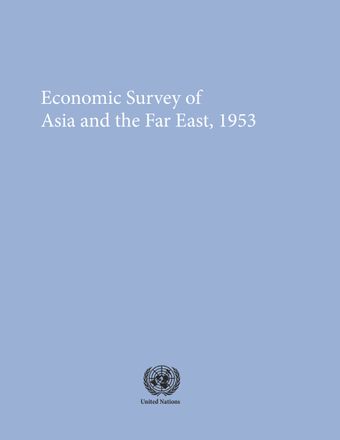Japan

- Author: United Nations Economic and Social Commission for Asia and the Pacific
- Main Title: Economic and Social Survey of Asia and the Far East 1953 , pp 79-90
- Publication Date: December 1953
- DOI: https://doi.org/10.18356/bb9ac625-en
- Language: English
The Japanese economy has made remarkable advances since the outbreak of the Korean war and output has now considerably exceeded, its pre-war level. The boom started with a sharp rise in prices, particularly of export commodities, stimulating the production of export goods. Since wages and the prices of domestic materials, such as coal, rose much more slowly, business profits increased and investment and the production of capital goods were stimulated. Moreover, rising prices, the expanding volume of exports, and the additional income accruing from special procurement of the United Nations forces in Korea, brought about a remarkable improvement in the balance of payments, enabling Japan to build up its foreign reserves. Wages lagged behind rising prices and consumer expenditures in real terms, which had been growing yearly since the end of the second world war, remained stable throughout 1951.
-
From This Site
/content/books/9789210599382s003-c008dcterms_title,dcterms_subject,pub_keyword-contentType:Journal -contentType:Contributor -contentType:Concept -contentType:Institution105


